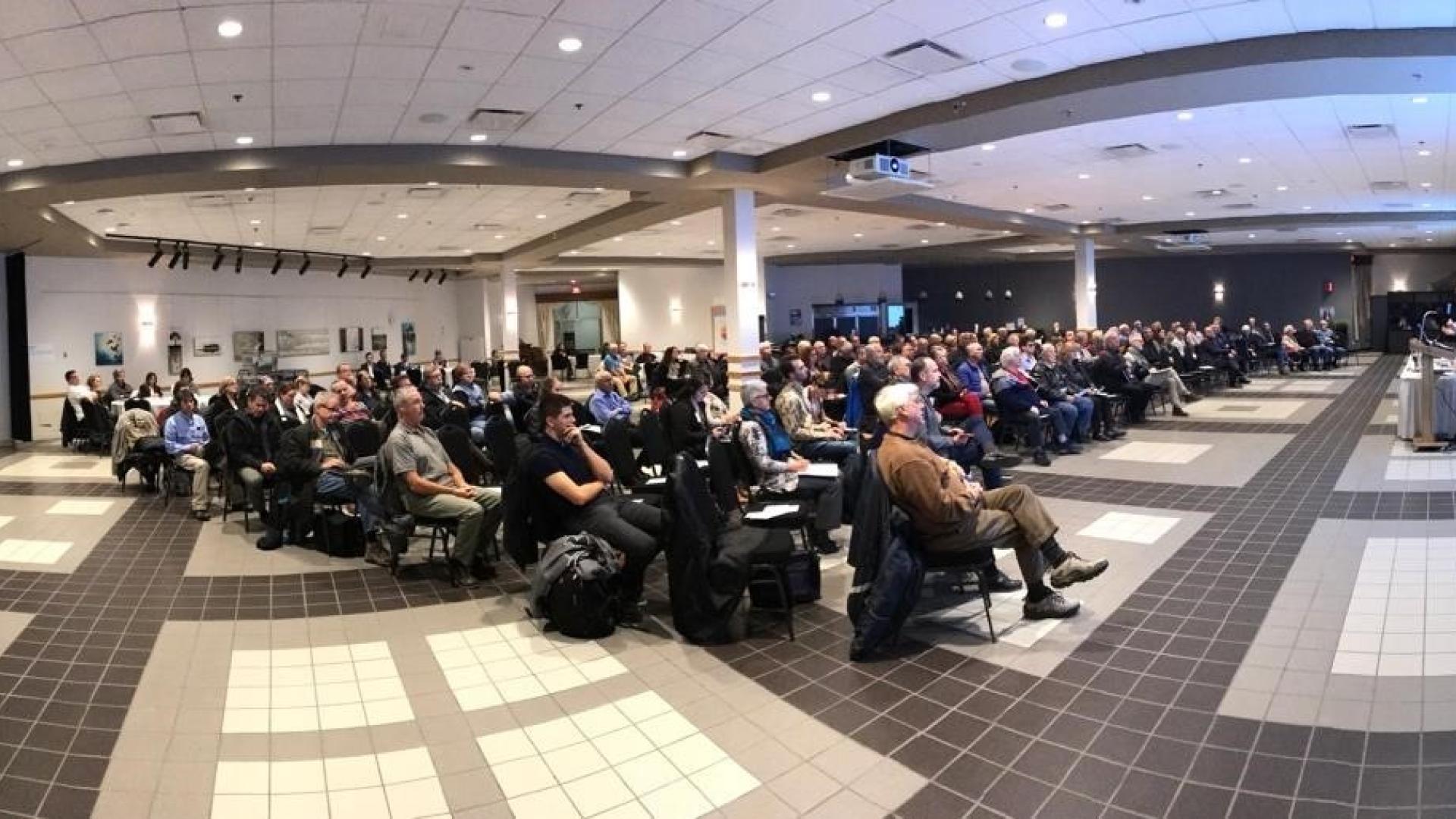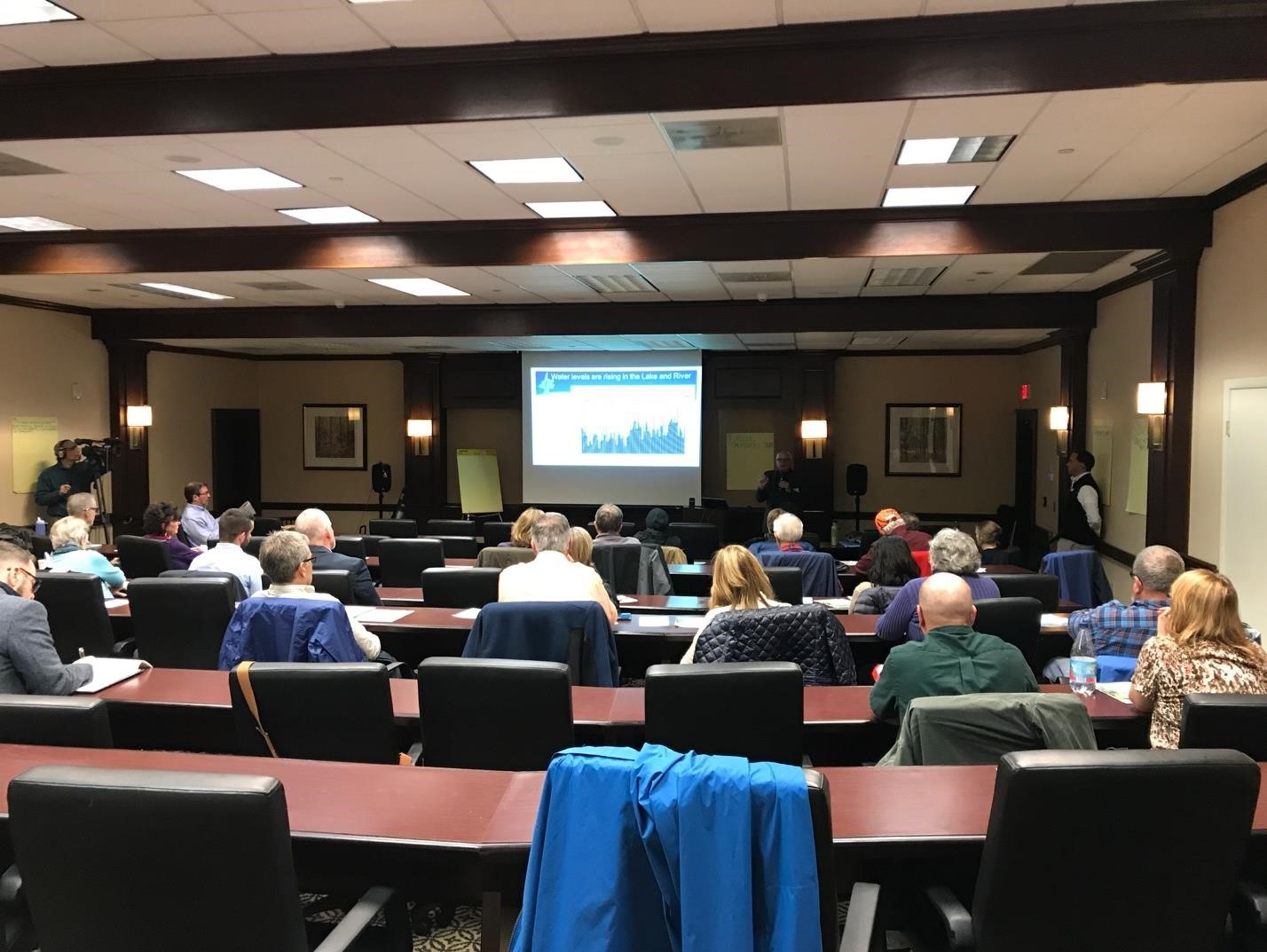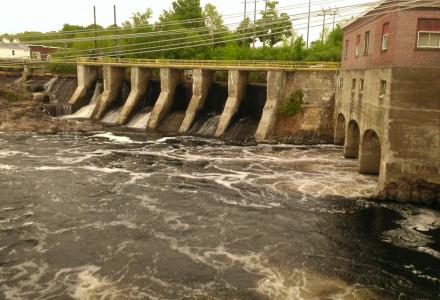
In a trio of public meetings that took place Nov. 7-9 in Quebec, New York and Vermont, members of the binational flooding study in Lake Champlain and Richelieu River heard firsthand from residents on topics including structural measures to reduce flooding, emergency communications, flood forecasting and environmental impacts.
The study will help the International Joint Commission (IJC) provide recommendations to the governments of the United States and Canada by 2021 on how they can mitigate the worst impacts of flooding in the basin that touches the two states and the province of Quebec. The International Lake Champlain-Richelieu River Study Board (LCRR) hosted the public meetings to update interested parties on the progress of its technical working groups, and to hear feedback from the residents and businesses in the areas affected by past floods.

Each meeting opened with a short video animation explaining the hydrology of the basin, including key factors that influenced the extreme flooding that occurred in 2011. Jean-François Cantin and Keith Robinson, Canadian and US study co-chairs, then provided an overview of the direction the study is taking in several areas, including potential measures to mitigate future flooding. Interesting to note was data showing an increase in average water levels in the basin since the 1970s. Co-chairs said that the study will focus on understanding how such factors as human interactions and a changing climate may be contributing to higher water levels.
Another part of the study is developing an improved binational flood forecasting system for use by governments and local agencies, emergency managers and the public.
The specific concerns expressed by participants varied according to region. For instance, at the meeting in Saint-Jean-sur-Richelieu, Quebec, a province that suffered 80 percent of the damages caused by flooding during the spring of 2011, there was a great deal of interest in ways to reduce those impacts – whether through an inflatable bladder, removing obsolete eel traps, dikes and mill canals on the river, reconnecting flood plains, or implementing new zoning regulations to keep people from building inadequately in flood zones. More than 100 people attended the meeting.

Upstream, meeting participants in Whallonsburg, New York, discussed flood forecasting and how best to communicate emergencies in their rural communities, in particular where cell phone signals are spotty and over-the-air radio and television signals are weak. They also felt building codes along the shoreline need to be better enforced and communicated to new or seasonal residents. Study members were urged to consider the impact of Lake Champlain’s tributaries, as they play a significant role in lake water levels, and are prone to erosional flooding that can damage homes and businesses. The tributaries aren’t explicitly included in the study reference.
In Burlington, Vermont, participants expressed concerns about ecological impacts of structural solutions, including how using an inflatable bladder to adjust flows and reduce flooding might affect wetlands and fish spawning. Study members noted that this was something they’ve been studying, and that an ecological impact analysis would take place if indeed they decide to recommend structural solutions.
Other feedback included focusing on nature-based solutions, such as reconnecting former wetlands, and making public warning systems more accessible and timely, especially those related to flood risks from heavy snowfall and subsequent melting.
There is still a lot of work to be done to identify the recommendations that will most effectively minimize impacts of future floods. The feedback received from this round of public meetings will be used to further refine the analyses and potential solutions that the board will ultimately recommend to the Canadian and US governments in fall 2021. Another round of public meetings will be held in 2019, as these are important opportunities to build a common understanding of issues and solutions. Stay connected and be involved—visit the study web page and subscribe to updates.

View the presentation at Channel 17 TV.

Kevin Bunch is a writer-communications specialist at the IJC’s US Section office in Washington, D.C.




